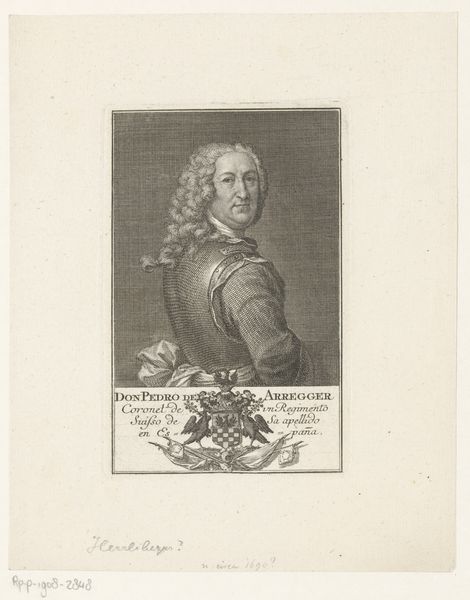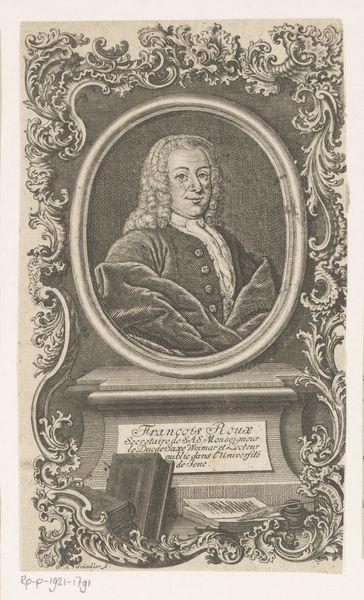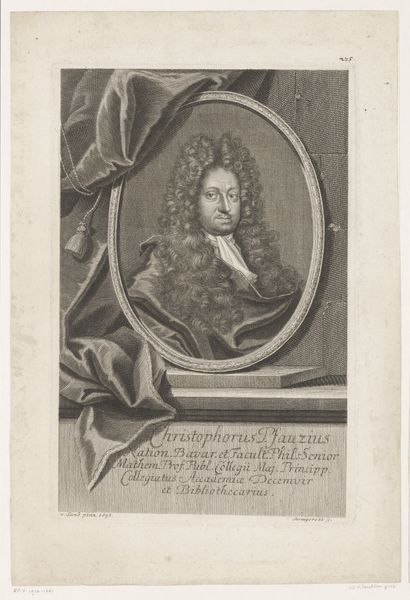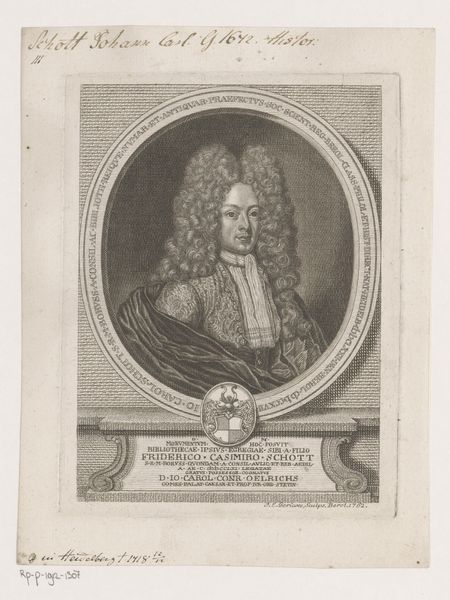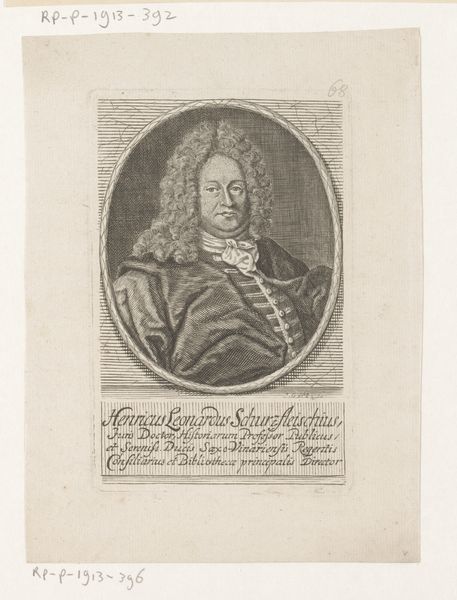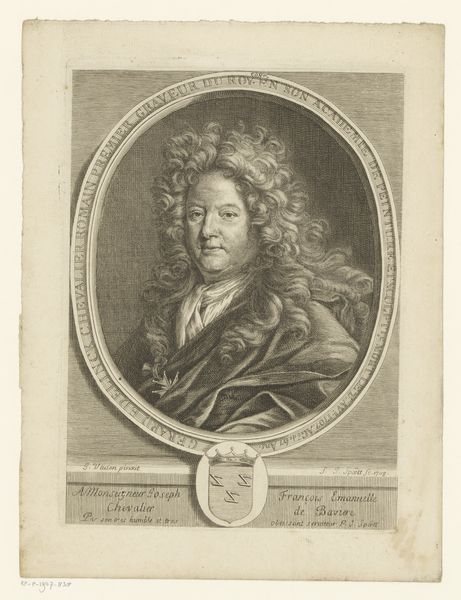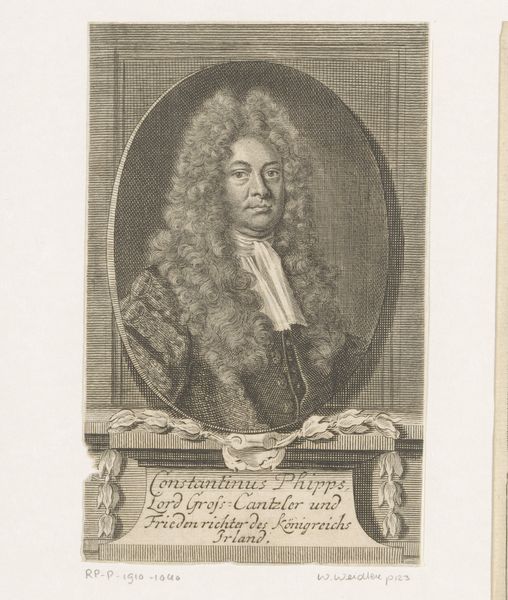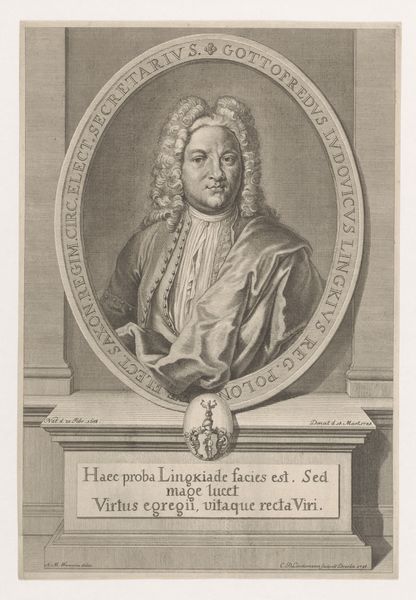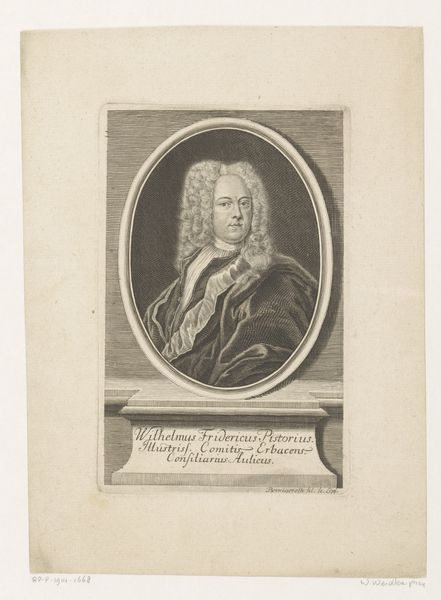
Dimensions: 178 mm (height) x 107 mm (width) (plademaal)
This is Meno Haas’s engraving of Ludvig Holberg, made in 1785. An engraving such as this begins with a metal plate, likely copper, into which the design is painstakingly incised using a tool called a burin. Look closely, and you will notice that the image is composed entirely of tiny lines and dots. The density and direction of these marks create the illusion of tone and texture, from the soft curls of Holberg’s wig to the crisp pages of the books beneath him. The engraver would have needed considerable skill and patience to achieve this level of detail. Engravings like this were not fine art in the modern sense, but rather a reproductive medium, a way of disseminating images widely in an age before photography. The image could be reproduced many times over, a crucial means of circulating knowledge and culture, and a very different proposition to unique handmade artworks. The printmaking process reveals the connection between art, labor, and the wider world.
Comments
No comments
Be the first to comment and join the conversation on the ultimate creative platform.


